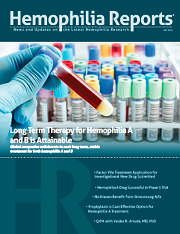Publication
Article
Hemophilia Reports
Prophylaxis is Cost Effective Option for Hemophilia A Treatment
Author(s):
Treating hemophilia A with primary prophylaxis is more cost effective than on-demand treatment, according to a study published in The Scientific World Journal.

Prophylaxis is more cost effective than on-demand treatment for hemophilia A, according to research published in The Scientific World Journal in January.
Researchers from Rome, Italy reviewed 5 studies from the last decade in order to discuss and appraise the aspects and results of other reviews focused on the treatments for hemophilia A. The researchers scoured databases for relevant studies published between January 2002 and November 2014 focused on cost effectiveness for both prophylaxis and on-demand hemophilia treatment. The investigators excluded papers that included inhibitor patients.
The authors included a total of 5 studies in their analysis. The choice of economic evaluation was justified in 3 out of the 5 studies examined, while just 1 study reported the details of the subjects from whom evaluations were obtained. All of the studies gave information on inflation adjustment or currency conversion where appropriate.
The incremental cost effectiveness ratio (ICER) of primary prophylaxis over 70 years in one study was €35.036 (about $37), though another study estimated it was less than €40.229 (about $42). Both of these studies were conducted by the Italian National Health System (NHS), and focused on the difference in FVIII half life which influenced the quantity of clotting factor required. The studies here did not take into account the immunogenic profile of the factor therapy, which the authors of the meta-analysis recommend.
A Canadian investigation the researchers examined found the ICERs of standard prophylaxis and escalating dose versus on demand therapy over 5 years to be €379.134 and €698.300 ($400 and $737), respectively, which were a tenth of the European study estimates. The researchers attributed these low estimates to differences in time horizons, treatment regimens, and quantity/ costs of clotting factor used in the study. The ICER in a Swedish study was €94.598 ($100) over a life span, which is — again – lower than the other European studies’ estimates.
The researchers also compared the studies in terms of dosage/ cost of FVIII and inhibitor development. Prophylaxis was dominant over on-demand treatment in a study from the United Kingdom due to the low cost of FVIII; though in a United States study, prophylaxis cost more than on demand therapy due to the high cost of FVIII. The ICER in the US was $68 in that study, which the researchers considered to be justified and standard with the European values.
“The cost of treatment, inhibitor development, and the immunogenic profile of the factor therapy should be considered in economic analyses to obtain a model that is closer to clinical reality, cost, and consumption of resources in each country,” the authors concluded. “We suggest conducting further economic evaluations in the Italian context in order to provide clear and specific data for the NHS and to obtain more accurate results for the treatment of hemophilia A.”



